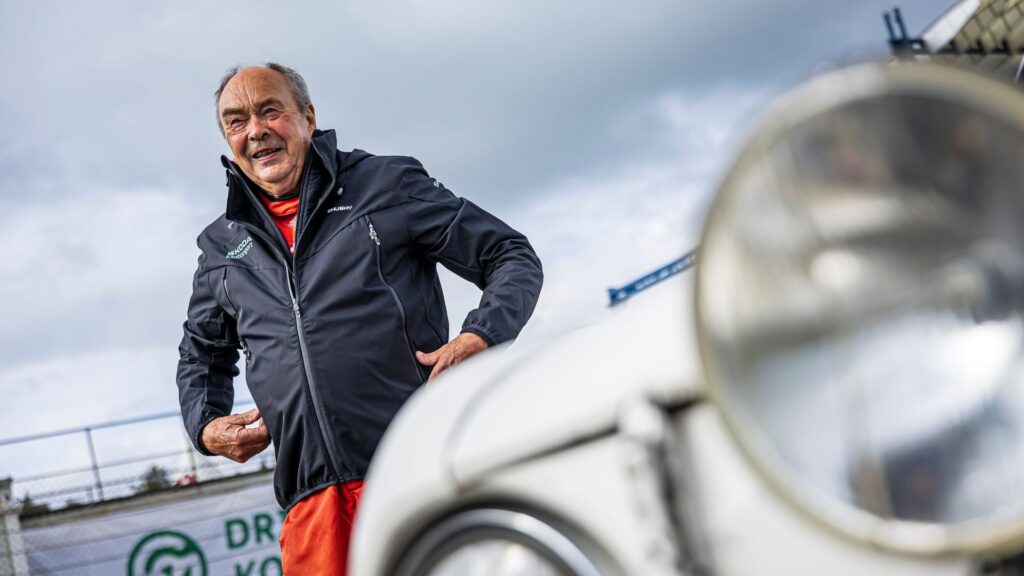The legendary Škoda 200 RS celebrates 50 years since its debut this year. This competition prototype was in many ways a breakthrough for the brand. It was the first Škoda car to carry the RS (rally sport) designation and at the same time the car that catapulted the brand to great success in modern international competitions. As part of the anniversary celebrations, another fifty-year-old, Petter Solberg, also tried out the special.
One of the greatest legends in the history of Škoda motorsport is undoubtedly the Škoda 130 RS special. It collected an incredible number of laurels and began an era of great competition success, which continues to this day. However, even before this legendary model began to collect said laurels, the 180/200 RS specials defended the Škoda brand's colours. If it weren't for them, the legendary 130 RS in the form in which we praise it today might not have been created.
The Škoda 200 RS was born in 1974, the same year as another rally legend: Petter Solberg. The former world rally champion drove the 200 RS around the race circuit as part of their joint celebrations. "What an experience. The engine torque allows the car to be easily controlled in drift. The weight of the engine at the rear gives it excellent traction and the balance is also excellent, making the car easy to drive," says Petter Solberg of his ride in the legendary prototype.
"I was happy. I was smiling the whole time," he comments on the ride. You really can´t blame him. The Škoda 200 RS was a very advanced and sophisticated competition car with a lightweight construction for its time.

This was supported by new axles or a powerful two-litre engine with an output of over 170 hp.
Before the 200 RS evolved into such a form, it took quite a long way to get there. The idea to build a new competition prototype was born in the early 1970s. The goal of the project was simple: to stand up against and face the best in the field of competition prototypes. The carmaker wanted to replace its then Škoda 120 S Rallye rally car and wanted to move up in competitions. The decision was thus made to use the Š 720 prototype engine with modern OHC distribution, which had already been developed at the time, and the first use in prototypes with the body of the 1000 MB and 100 L models took place in 1971.
The cars tested the five-speed Tatra gearbox. However, this, as well as attempts to shift the car's centre of gravity by placing the engine in front of the rear axle, did not work. Gradually, nonetheless, the designers came to a successful result. Jiří Šedivý, a driver and constructor in one person, who had already built a special Škoda 110 R B5 for the 1973 season, helped a lot. It was based on the legendary serial "Erko“ but received a 7.5-centimetre lowered roof and windshield and body panels made of 0.7 mm thick aluminium sheet.



The design of the 200 RS was a departure from this special. The lowered body received a safety frame, the designers incorporated an impact radiator with exhausts in the front bonnet, and there was also a new spoiler at the front. The bonnet, including the rear spoiler, was made of fibreglass. The whole was completed with flared fenders and magnesium alloy rims. The disc brakes at the rear (they had been at the front from the beginning) appeared only during development on one of the prototypes. Instead of the Tatra gearbox, the car used a five-speed Porsche manual.
The result was a car that, depending on the gearing, could race at speeds of more than 240 km/h. The 200 RS saw its first live appearance in May 1974 at the IDA Rally, two prototypes then competed in the Barum Rally and three cars competed in the Škoda Rally in June. These were two 200 RS prototypes and one sister car, the 180 RS, whose engine had a reduced displacement from two to 1.8 litres thanks to its shorter stroke. It seemed that a competition legend was born. However, there was a change in regulations that excluded the homologation of prototypes, and the FIA began to prefer rally cars based on production models. This change ended the career of the 200 RS in 1975 before it could really get going. Instead, however, another star was born, the aforementioned Škoda 130 RS.










